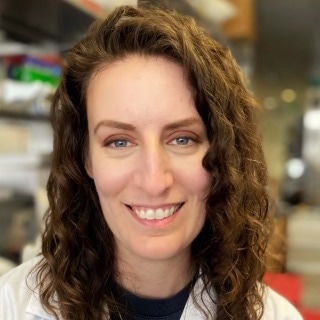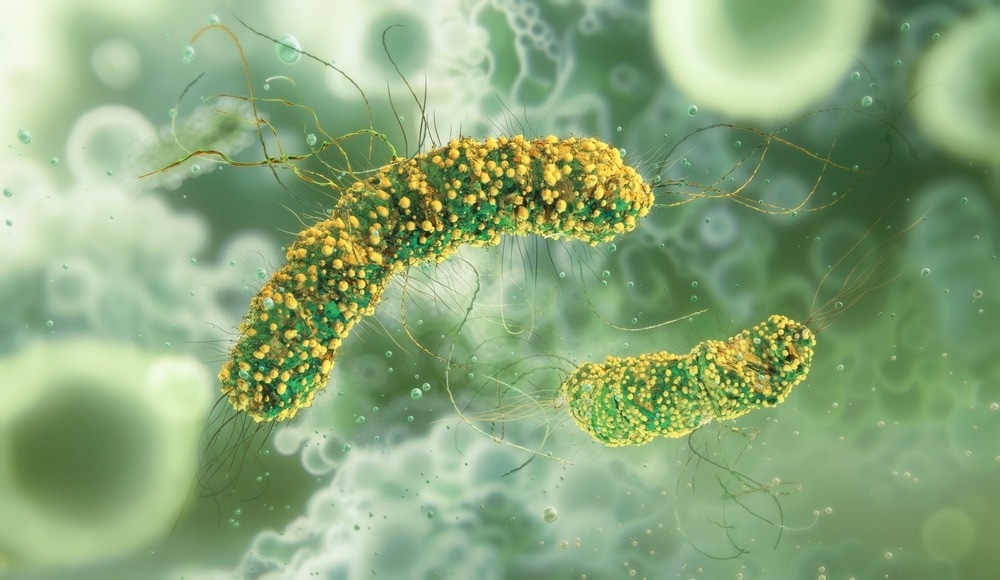Reviewed by Danielle Ellis, B.Sc.Sep 26 2024
Envision being a single cartwheel away from altering looks. The brown locks will turn platinum blond with just one flip. That is similar to what occurs in certain prokaryotes, or single-celled creatures like bacteria when they go through a process known as inversion.
 Rachael Chanin. Image Credit: Stanford Medicine
Rachael Chanin. Image Credit: Stanford Medicine
A fundamental tenet of biology that one gene can code for just one protein has been called into question by research performed by experts at Stanford Medicine. The research demonstrates that inversions, which result in the physical flipping of a DNA sequence and alter an organism's genetic identity, can happen inside a single gene.
“Bacteria are even cooler than I originally thought, and I am a microbiologist, so I already thought they were pretty cool,” said Rachael Chanin, PhD, a Postdoctoral Scholar in Hematology.
According to Chanin, microbiologists have known for decades that bacteria may activate or deactivate genes by flipping little portions of their DNA, but as far as the researchers are aware, those tumbling fragments have never been discovered inside the boundaries of a single gene.

Image Credit: Corona Borealis Studio/Shutterstock.com
Similar to how a sentence's meaning may be completely altered by flipping the letters in the word “dog” from “I am a dog” to “I am a god,” within-gene inversion essentially uses the same material to recode the genetics of the bacterium. That could lead to a sequence that, when inverted, codes for the production of a different protein, the activation of a gene, or a stop in gene activity.
I remember seeing the data, and I thought, ‘No way, this cannot be right, because it is too crazy to be true. We then spent the next several years trying to convince ourselves that we had made a mistake. But as far as we can tell, we have not.”
Ami Bhatt, PhD, Professor, Genetics and Medicine, Stanford Medicine
The study was published in the journal Nature. The work was Co-led by Chanin and Patrick West, PhD, a former postdoctoral scholar. Bhatt is the senior author of the study.
Flip-Flopping
Scientists looking for a salmonella cure in the 1920s discovered the first indication of inversions. In an attempt to preserve infection, they tried obtaining antibodies from animals that had contracted the bacteria. The idea was that these immunological molecules could be passed to new animals.
However, it was never successful since even the strains of bacteria they were certain were genetically identical might resist. Researchers now understand that the bacterium's ability to evade the animals' immunity was made possible by an inversion that changed its coding.
Since then, microbiologists have discovered inversions in short DNA segments belonging to different types of prokaryotes. However, Bhatt and her colleagues questioned whether they could also occur inside a single gene. West developed an algorithm known as PhaVa to find potential genomic inversions in bacteria.
The program downloads thousands of genome sequence segments from different prokaryotes and searches for regions that appear to be “flappable” that is, segments with the redundant palindromic quality known as inverted repeats, such as CCTTA and ATTCC on the other side of the potential inversion.
The program compares the fictitious genomes with the actual sequence, compiling a database of what these sequences might look like if they were flipped. Next, it counts the locations in an organism's genome that include both flipped and unflipped sequences; each match denotes a potential inversion.
For the first time, the software discovered inversions within genes, discovering thousands of inversions in bacteria and other prokaryotic species. That gave rise to the hypothesis that single-gene inversions happen and might perhaps be somewhat prevalent, according to Bhatt.
Bhatt said, “This was really surprising to us. To our knowledge, this has never been seen before.”
There is still a major mystery: what triggers an inversion? The group hypothesizes that particular environmental stimuli and particular enzymes facilitate and cause the switch.
That is a to-do now. One of our next steps is to try to decode the molecular grammar so we can build a database of enzymes and a database of the inverted repeats that they flip.”
Ami Bhatt, PhD, Professor, Genetics and Medicine, Stanford Medicine
Interpreting Inversions
Although there is still much to learn about inversions, Bhatt believes there are many potential uses.
“This is effectively a heritable, reversible type of genetic regulation,” she said.
She suggests that synthetic biology research may benefit from the future ability of scientists to use inversions to develop a toggleable bacterial system to control their gene expression. Alternatively, some diseases and the condition of bacterial inversions may be related; in that case, it might be possible to change the state of the bacteria and control an illness.
This type of adaptation has just been hiding in front of us, waiting for the right tool and the right technology and biological question to be asked, and it makes me wonder, how many more bacterial secrets are just waiting for us to uncover them?”
Rachael Chanin, PhD, Postdoctoral Scholar, Stanford Medicine
Source:
Journal reference:
Chanin, R. B., et al. (2024) Intragenic DNA inversions expand bacterial coding capacity. Nature. doi.org/10.1038/s41586-024-07970-4.